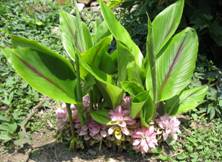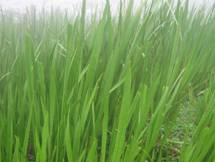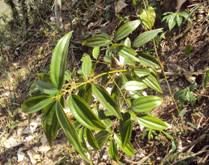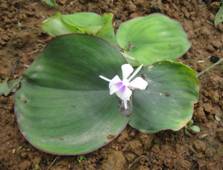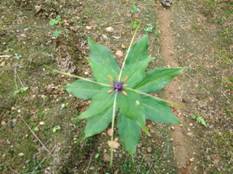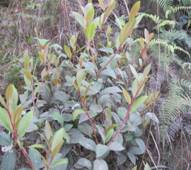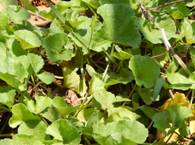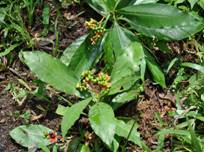- Skip to main content
- Screen Access Reader
- Text Size



- Contrast Options


- Character Spacing

Meghalaya State Medicinal Plants Board
Introduction
Meghalaya is very rich in floral diversity, a significant part of which comprises medicinal and aromatic plants and there is a long- standing tradition of use of medicinal plants in the State. The development of medicinal plants sector in Meghalaya has a great scope for providing employment to the people as there is a huge and ever increasing market for medicinal and aromatic plants and their preparations in the country and abroad.
The Government of Meghalaya constituted the Meghalaya State Medicinal Plants Board to handle all matters related to policy formulation, co- ordination of various agencies dealing with medicinal plants, local health traditions, sustained availability of medicinal plants,validation and certification issues and conservation and preservation of medicinal plants in the State.
Diversity of Medicinal and aromatic plants in Meghalaya:
Meghalaya with its wide ranging altitudes, forest types and resultant agroclimatic conditions offers habitats for a very large number of medicinal plants. The richness is also the result of the people’s traditional knowledge on them. Though the flora is well known and many ethnobotanical publications have been brought out, a consolidated account of the medicinal plant diversity is still lacking. This is all the more essential when we consider different tribes inhabiting different districts with their diverse traditional practices. Altogether 834 medicinal plant species have so far been reported (Fig.1) Rubiaceae is the dominant family with maximum number of medicinal plants in Meghalaya.
Habitat wise distribution of 834 medicinal plants of Meghalaya:-
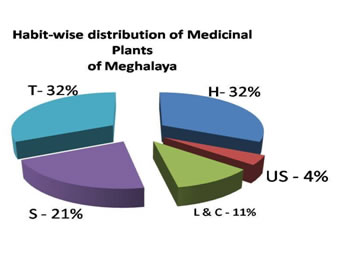
H- Herb,
T- Tree, Shrub,
L & C-Leafy and Climbers,
US- under story
Endemic and Threatened Medicinal Plant Species:
There are many medicinal plants, which have been classified as endemic and/or threatened in the state depending on their distribution pattern and population size. Eight medicinal plant species such as Camellia caduca Cl ex Brandis, Citrus latipes Tanaka, Nepenthes khasiana Hk. f, Osbeckia capitata Benth are reported to be endemic to Meghalaya only. Thirty-seven medicinal plants, like Schima khasiana Dyer, Boehmeria macrophylla D.Don, Citrus medica L, Ilex khasiana Purk, Piper griffithii C.DC, Acanthus leucostachys Roxb. etc. which has been classified as endemic to Eastern Himalayas, Western Ghats, Indo-Burma region and Peninsular India, are also found in Meghalaya. Seventeen medicinal plant species found in Meghalaya have been classified under threatened category some of these are Taxus wallichiana var. baccata, Dendrobium nobile, Panax pseudo-ginseng, Nepenthes khasiana etc
Curcuma longa |
Acorus calamus |
Cinnamomum tamala |
kaempferia galanga |
paris polyphylla |
Gaultheria fragrantissima |
Centella asiatica |
|
Rauvolfia serpentina |
Medicinal plants found in Meghalaya and uses ![]() (199 kb)
(199 kb)
Functions of MSMPB :
The Meghalaya State Medicinal Plants Board (MSMPB) headed by CEO of the rank of APCCF supports various efforts to identify, protect and proliferate the species of medicinal and aromatic plants and to address issues of health care by traditional practitioners and of plant based modern medicine. The Meghalaya State Medicinal Plants Board has the following mandate:
- Extend financial assistance to farmers cultivating medicinal plants
- Identify, document, inventorise and quantify medicinal plants
- Promote in-situ conservation and ex-situ cultivation
- Facilitate co-operative efforts and cluster activities
- Deal with matters related to import and export
- Develop protocols for cultivation, standardization and quality control
- Empower farmers/growers through capacity building.
Activities and Programmes:
The National Medicinal Plants Board has become a part of the National AYUSH Mission under the Ministry of AYUSH Govt. of India, New Delhi. The main objective is to promote AYUSH medical system through cost effective AYUSH sevices, strengthening of educational system, facilitate enforcement of quality control of Ayurveda, Siddha and Unani & Homoepathy (ASU & H) drugs and sustainable availabilty of ASU & H raw materials. Under the National AYUSH Mission Scheme, the Board has been entrusted with the implementation of the component ‘Medicinal Plants’ to be taken up in the State. Through this scheme the Board has been taking up activities like nurseries development, cultivation of medicinal plants, training/ awareness programs, etc.
1. Nursery Development:
a) Model nursery:
To meet the requirement of quality planting material for cultivation assistance would be provided for new nurseries under the public sector. Infrastructure for model nurseries would include the following:
i) Mother stocks block maintenance to protect from adverse weather conditions.
ii) Raising root stock seedlings under net house conditions.
iii) Propagation house with ventilation having insect proof netting in the sides and fogging and sprinkler irrigation systems.
iv) Hardening /maintenance in insect proof net house with light screening properties and sprinkler irrigation systems.
v) Pump house to provide sufficient irrigation and water storage.
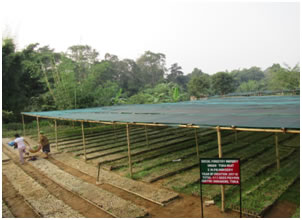
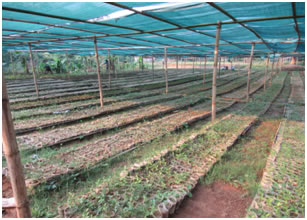
Model Nursery at Danakgre, West Garo Hills, Tura
b) Small Nursery:
Small nurseries, covering area of about one hectare, will have infrastructure facilities to hold 60,000 to 70,000 plants. These plants will be maintained for a period of approximately 9-12 months. Infrastructure for the small nurseries will consist of a net house. Micro sprinkler irrigation system will be provided in the net house. The nurseries will also have provision for solar sterilization of soil media to meet the contingency requirement of containers/transfer from small to big containers.
Small nurseries would cost Rs. 6.25 lakhs per unit. It would be the responsibility of the nurseries to ensure quality of the planting material. The nurseries could be multi-crop or crop specific depending upon the requirements of planting material in the Locality/project area. Hence, the type of nursery proposed to be established should be clearly indicated in the Action Plan. The Action Plan should also contain an assessment of the existing nurseries, the number of planting material being produced, crop wise and the additional requirement of nurseries. This scheme will be implementing through the DFO Social Forestry Division.
2. Cultivation:
Cultivation will be assisted only in case of clusters. Each cultivation cluster will have minimum 2 hectare of the land. This scheme will be implementing through the DFO Social Forestry Division. Assistance will be available to willing farmers desirous of cultivating medicinal plants on the same land in successive years. The Species will be provided with a subsidy at @ 30%, 50% and %75.
The species proposed for cultivation should be according to the prioritized list of NMPB. For details visit https://www.nmpb.nic.in/content/prioritised-list-medicinal-plants-cultivation.
3. Assistance to Local Herbal Practitioners:
The Board is also providing assistance to Local Herbal Practitioners for setting up of a small home herbal garden in an area of not less than 5000 sq. This scheme will be implementing through the DFO Social Forestry Division.
4. Conducting Workshop and Seminar Programs:
The Board has been conducting workshops and seminar programs both at the State and District level. The aim of the programs is to impart knowledge to the participants regarding the importance of medicinal plants sector, to provide information regarding the schemes related to medicinal plants, to inform those in the business various aspects so that they may make a difference in production and marketing of their products and to encourage the farmers and local herbal practitioners to cultivate medicinal plants so as to reduce the collection from the wild
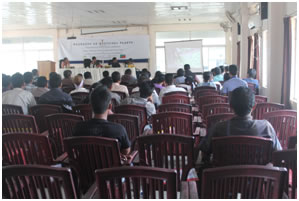
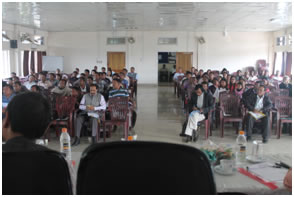
Seminar and Workshop Program on Medicinal Plants at Tura
5. Participation in Exhibition/ Fairs:
The Board used to participate in various exhibition and fairs related to medicinal plants both within and outside the State. The department of AYUSH used to organize Arogya fairs from time to time in different States of the country. The Arogya fair is organized every year to showcase the strengths, potential and latest achievement in India in Traditional Medicine and Homoeopathy. One of the main aims of the Board is to participate in such programs to give an opportunity to farmers and local herbal practitioners to-
- showcase the endemic medicinal and aromatic plants found within State
- give a unique opportunity to the Herbal Practitioners of the State to showcase and expose their unique talents
- promote trade and marketing of raw medicinal plants and medicinal plant products cultivated and processed by the farmers and traditional healers of the State
Give a good opportunity for the traditional healer to share their experiences and successful stories in healing with the scientist , research scholars, students and public.
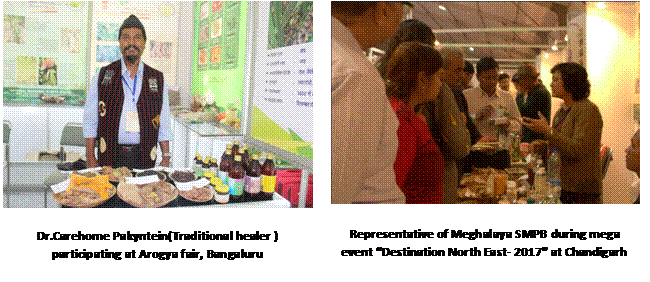
6. Central Sector Scheme on Conservation, Development and Sustainable Management of Medicinal plants:
The Board is also implementating the Centrally Sector Scheme on Conservation, Development and Management of Medicinal Plants which includes Home Herbal Gradens, School Herbal Gardens, Institution/Public Herbal Gardens etc….. the details about information of Centrally Sponsored Scheme may be obtained from the NMPB website :www.nmpb.nic.in.
7. Areas of Concern :
- Survey and Inventorisation of medicinal plants.
- In-situ conservation and ex-situ cultivation of medicinal plants.
- Production of quality planting material.
- Extension activities – Information, education and communication like seminar/workshops, training, etc.
- Marketing of medicinal plants for domestic and global market.
- Research & development of medicinal plants sector.
- Promote co-operative efforts amongs growers and collectors of medicinal plants.
Achievement during the Year 2015-16 and 2016-17:
During the Year 2015-16 and 2016-17 the Board has created two model nurseries i.e one at West khasi Hills District under the supervision of the DFO Social Forestry Division, Nongstoin and another at West Garo Hills under the supervision of the DFO Social Forestry Division,Tura. The Board has also created two small nurseries at East Khasi Hills Division under the supervision of DFO Social Forestry Division, Shillong and at East Garo Hills District under the supervision of DFO Social Forestry Division, Williamnagar. During the same year the Board has also provided finiancial assistance to the clusters for cultivation of medicinal plants for an area of about 62 ha. (i.e 20 ha under the supervision of the DFO Social Forestry Division, West Khasi Hills District and 42 ha under the supervision of the DFO Social Forestry Division, Ri Bhoi District.)
Contact
Chief Executive Officer
Meghalaya State Medicinal Plants Board
Meghalaya Forest Headquarter, Sylvan House,
Lower Lachumiere
Shillong,- 793001.
INDIA
Phone: +91 364 2227332
Fax: +91 364 2228468
E-mail: smpbmegh@gmail.com
